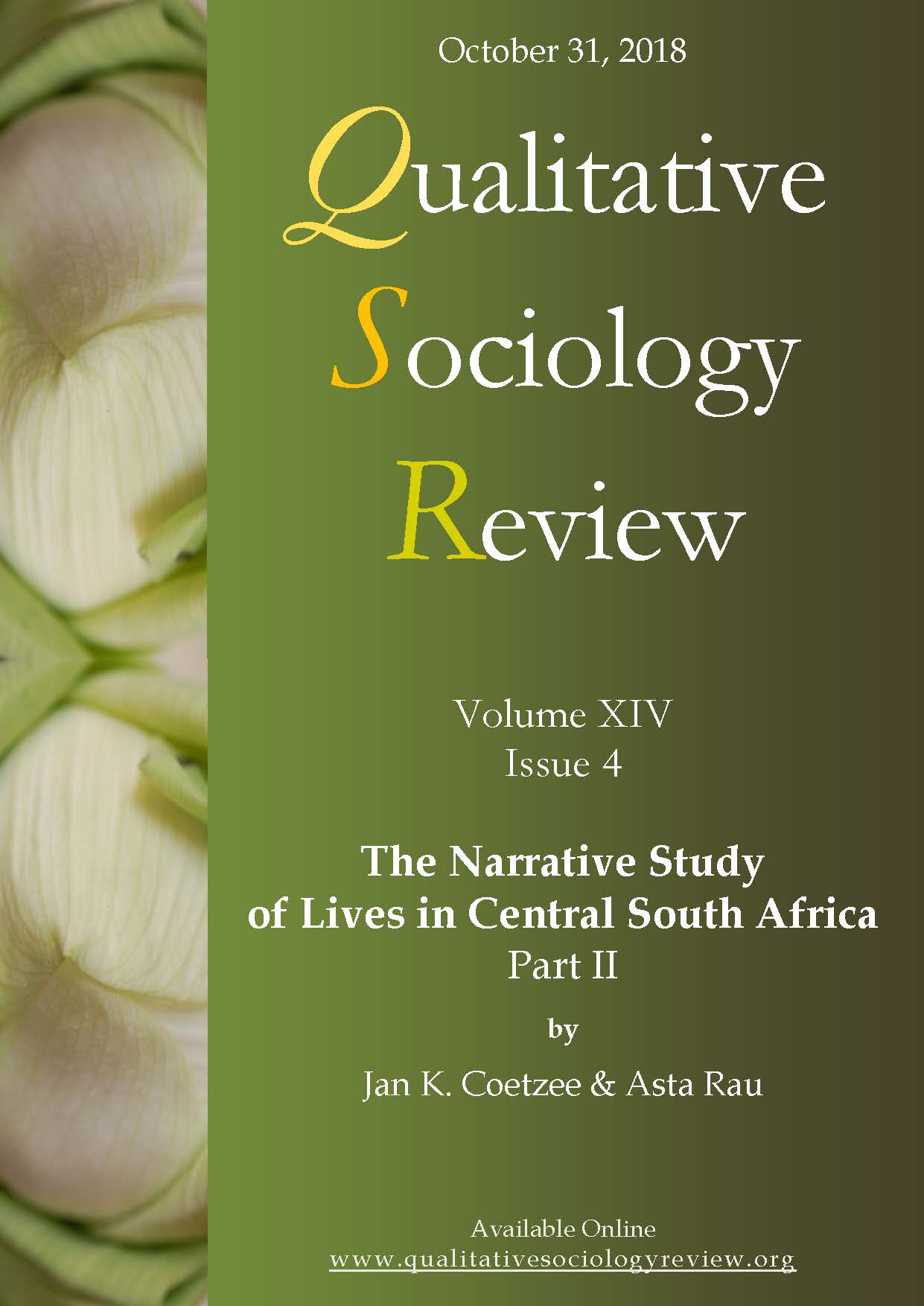Reflecting on Female Beauty: Cosmetic Surgery and (Dis)Empowerment
DOI:
https://doi.org/10.18778/1733-8077.14.4.04Keywords:
Feminist Thinking, Cosmetic Surgery, Phenomenology, Lifeworld, Social Constructivist, Embodiment, Self-Empowerment, FemininityAbstract
This project aims to unwrap some of the complexities related to female beauty and the body. It reflects on the second wave radical feminist view that beautifying the female body serves to attract male approval via the male gaze, both of which are deeply entrenched in patriarchal power. This perspective positions cosmetic surgery as a disempowering act for women. In riposte, we turn to third wave liberal feminist ideas to engage with the narratives of ten participants who tell of their personal experiences of, and motivations for, undergoing a cosmetic intervention. We undertake an in-depth exploration of these lifeworld experiences and the interplay of subjectivity and intersubjectivity in the women’s encounters. Findings suggest that a cosmetic intervention is often obtained for the self as opposed to satisfying the “other.” Importantly, cosmetic interventions allow a process to occur in which an individual’s physical body becomes better aligned to her sense of self. From this liberal feminist perspective, cosmetic surgery is positioned as an empowering act.
Downloads
References
Bamberg, Michael. 2012. “Narrative Practice and Identity Navigation.” Pp. 99-122 in Varieties of Narrative Analysis, edited by James A. Holstein and Jaber F. Gubrium. London: Sage.
Google Scholar
DOI: https://doi.org/10.4135/9781506335117.n6
Bartlett, Elizabeth A. 2004. Rebellious Feminism: Camus’s Ethic of Rebellion and Feminist Thought. Basingstoke, Hampshire: Palgrave Macmillan.
Google Scholar
DOI: https://doi.org/10.1057/9781403976758_1
Berger, Peter and Thomas Luckmann. 1991. The Social Construction of Reality: A Treatise in the Sociology of Knowledge. London: Penguin Books.
Google Scholar
Blum, Virginia L. 2003. Flesh Wounds: The Culture of Cosmetic Surgery. Berkeley, CA: University of California Press.
Google Scholar
DOI: https://doi.org/10.1525/9780520938731
Bromley, Victoria L. 2012. Feminisms Matter: Debates, Theories, Activism. Toronto: University of Toronto Press.
Google Scholar
Clandinin, D. Jean. 2007. Handbook of Narrative Inquiry: Mapping a Methodology. London: Sage.
Google Scholar
DOI: https://doi.org/10.4135/9781452226552
Creswell, John W. 2014. Research Design: Qualitative, Quantitative, and Mixed Method Approaches. London: Sage.
Google Scholar
Davis, Cindy and Melanie Katzman. 1999. “Culture and Eating Disorders.” Pp. 58-60 in Eating Disorders: A Reference Sourcebook, edited by Raymond Lemberg and Leigh Cohn. Phoenix, AZ: The Oryx Press.
Google Scholar
Davis, Kathy. 1995. Reshaping the Female Body. New York: Routledge.
Google Scholar
Davis, Kathy. 2003. Dubious Equalities & Embodied Differences: Cultural Studies on Cosmetic Surgery. Lanham, MD: Rowman & Littlefield Publishers.
Google Scholar
de Beauvoir, Simone. 1956. The Second Sex. London: Lowe and Brydone.
Google Scholar
Garfinkel, Harold. 1967. Studies in Ethnomethodology. Englewood Cliffs, NJ: Prentice-Hall.
Google Scholar
Gimlin, Debra L. 2002. Body Work: Beauty and Self-Image in American Culture. Berkeley, CA: University of California Press.
Google Scholar
DOI: https://doi.org/10.1525/9780520926868
Heggenstaller, Alessandra K. 2018. The Role of Cosmetic Surgery in the Embodied Experience of Female Beauty: A Narrative Study in Bloemfontein, South Africa. PhD Thesis. Bloemfontein: University of the Free State.
Google Scholar
Heywood, Leslie and Jennifer Drake. 1997. Third Wave Agenda: Being Feminist, Doing Feminism. Minneapolis, MN: University of Minnesota Press.
Google Scholar
hooks, bell. 2000. Feminism is for Everybody. New York: South End Press.
Google Scholar
hooks, bell. 2015. Feminist Theory: From Margin to Center. New York: Routledge.
Google Scholar
DOI: https://doi.org/10.4324/9781315743172
Jardine, Alice and Paul Smith. 2013. Men in Feminism. New York: Routledge.
Google Scholar
Jeffreys, Sheila. 2005. Beauty and Misogyny: Harmful Cultural Practices in the West. New York: Routledge.
Google Scholar
DOI: https://doi.org/10.4324/9780203698563
Kendall-Tackett, Kathleen and Bridget Klest. 2013. Trauma, Dissociation and Health: Casual Mechanisms and Multidimensional Pathways. New York: Routledge.
Google Scholar
DOI: https://doi.org/10.4324/9781315875408
Kosut, Mary. 2012. Encyclopedia of Gender in Media. London: Sage.
Google Scholar
DOI: https://doi.org/10.4135/9781452218540
Levin, Ira. 1972. The Stepford Wives. New York: Random House.
Google Scholar
Levine, Ed. 2005. Uncovering the Body: Essays on Art and the Body. Lincoln, NE: iUniverse.
Google Scholar
Mulvey, Laura. 1975. “Visual Pleasure and Narrative Cinema.” Screen 16(3):6-18.
Google Scholar
DOI: https://doi.org/10.1093/screen/16.3.6
Peacock, Louisa. 2013. The Pursuit of Beauty: What Compels Women to Go Under the Knife. Retrieved November 08, 2016 (http://www.telegraph.co.uk/women/womens-life/10071794/Cosmetic-surgery-What-compels-women-to-go-under-the-knife.html).
Google Scholar
Pitts-Taylor, Victoria. 2007. Surgery Junkies: Wellness and Pathology in Cosmetic Culture. New Brunswick, NJ: Rutgers University Press.
Google Scholar
Redstockings. 1969. Redstockings Manifesto. Retrieved February 06, 2018 (http://www.redstockings.org/index.php/rs-manifesto).
Google Scholar
Robinson, Michael D. and Michael Eid. 2017. The Happy Mind: Cognitive Contributions to Well-Being. Cham: Springer.
Google Scholar
DOI: https://doi.org/10.1007/978-3-319-58763-9
Rocco, Anna. 2015. Beauty Is Subjective – It Has No Concrete Definition. Retrieved July 05, 2016 (http://nevadasagebrush.com/blog/2015/11/17/beauty-is-subjective-it-has-no-concrete-definition/).
Google Scholar
Schacht, Steven P. and Doris W. Ewing. 2004. Feminism with Men: Bridging the Gender Gap. Lanham, MD: Rowman & Littlefield Publishers.
Google Scholar
Schütz, Alfred. 1967. The Phenomenology of the Social World. Evanston, IL: Northwestern University Press.
Google Scholar
Schütz, Alfred. 1970. On Phenomenology and Social Relations: The Heritage of Sociology. Chicago: University of Chicago Press.
Google Scholar
Schütz, Alfred and Thomas Luckmann. 1973. The Structures of the Life-World, Volume 1. Evanston, IL: Northwestern University Press.
Google Scholar
Snyder, R. Claire. 2008. “What Is Third Wave Feminism? A New Directions Essay.” Journal of Women in Culture & Society 34(1):175-196.
Google Scholar
DOI: https://doi.org/10.1086/588436
Southerton, Dale. 2011. Encyclopedia of Consumer Culture. London: Sage.
Google Scholar
DOI: https://doi.org/10.4135/9781412994248
Tyler, Connie. 2008. Dancing the Deep Hum, One Woman’s Ideas about How to Live in a Dancing, Singing Universe! Berkeley, CA: Deep Hum Productions.
Google Scholar
Wegenstein, Bernadette. 2012. The Cosmetic Gaze: Body Modification and the Construction of Beauty. Cambridge: MIT Press.
Google Scholar
DOI: https://doi.org/10.7551/mitpress/9780262232678.001.0001
Young, Iris M. 2005. On Female Body Experience “Throwing Like a Girl” and Other Essays. New York: Oxford University Press.
Google Scholar
DOI: https://doi.org/10.1093/0195161920.003.0003
Zeisler, Andi. 2008. Feminism and Pop Culture: Seal Studies. New York: Seal Press.
Google Scholar
Downloads
Published
How to Cite
Issue
Section
License
Copyright (c) 2018 Qualitative Sociology Review

This work is licensed under a Creative Commons Attribution-NonCommercial-NoDerivatives 4.0 International License.











